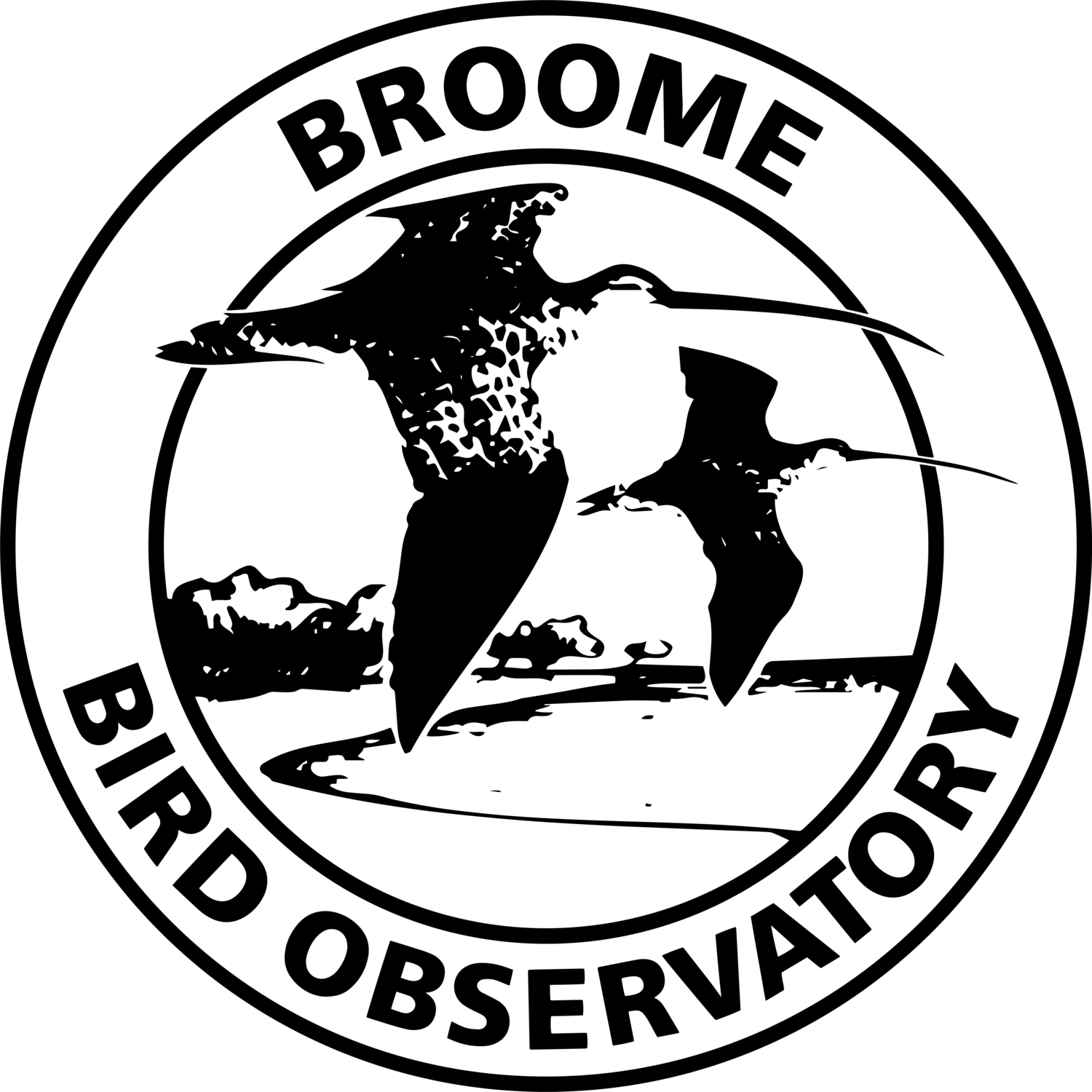May to early August (2017)
The busy season (for guests!) has descended on the observatory in a big way this year, with our tours fully booked for most of July and plenty of campers in the campground! BBO staff also ran a short course on raptor, tern and shorebird identification with raptor expert Dr Stephen Debus. The raptors put on a good show, with 16 species recorded during the course field trips including an Australian Hobby catching a Red-kneed Dotterel in front of us at Kidney Bean Claypan.
The floodwaters on Roebuck Plains have gradually dried, though there is still plenty of water in the lakes and claypans. Most importantly, this meant we were finally freed from the mosquito plague in early June! An added benefit was the concentrations of waterbirds that developed around the remaining areas of water, leading to some exceptional counts. These included 25,000 Plumed Whistling-Ducks at the sewage ponds in town, over 50,000 Grey Teal at Duck Lake and Kidney Bean, 1,500 Red-kneed Dotterel at Kidney Bean, 1,000 Magpie Geese on a dam Roebuck Plains and 400 Australasian Swamphen at Lake Eda. Whilst these numbers have largely dispersed, there’s still an excellent variety of waterbirds at our wetlands, and this should improve further as the migratory shorebirds steadily increase. The Yellow Chats at Kidney Bean have also been enjoying the good conditions, with some continuing to breed throughout the Dry season so far – the bonus for our guests is that this has meant many of them have retained their stunning breeding plumage throughout this period!
Male Yellow Chat (Photo: Patrick Kelly) and nestlings (Photo: Emilia Lai) on the edge of Kidney Bean.
The drying plains also saw shorebird numbers increasing again on the high tide roosts near the BBO, including a handful of Asian Dowitchers. A lone immature Common Redshank has also remained in the bay for the Dry, but has been studiously ignoring the roost sites near BBO so has only been seen when feeding along Crab Creek. The annual Dry season MYSMA shorebird count in Roebuck Bay in early July recorded a little over 22,000 migratory shorebirds still in the bay. The first returning adult shorebirds were noted in mid-July (Common & Wood Sandpipers), with the first juveniles expected later this month, so this number is steadily growing towards the average 130,000 or so present during the Wet season.
The most unusual sighting for the period was a small swiftlet sp. that flew over a group of our short-course participants while we were viewing shorebirds in the bay. It was seen again briefly passing near the observatory shortly afterwards, but views in both instances were quite brief. Several subtle characteristics, including a relatively obvious pale rump, shallow tail fork, and small size are supportive of Edible-nest Swiftlet, which is also the most likely of the candidates in terms of range and time of year. The influx of waterbirds to the region included several rare species for the region, including several Freckled Duck at Lake Eda in May, Australasian Shoveler at Lake Eda in May and June, and Kidney Bean Claypan and Duck Lake in early July, Chestnut Teal at Kidney Bean in early July, and Broome’s first confirmed records of Dusky Moorhen at Lake Eda in May. Also of note have been several Oriental Pratincole out on Roebuck Plains amongst the numerous Australian Pratincoles – very unusual for the Dry season. Around the observatory itself, two Leaden Flycatchers, including an adult male, have been present around the grounds since late May, a scarcity in the Broome area.
Rarely seen during the dry season - Oriental Pratincoles at Kidney Bean (Photo: Emilia Lai) and Roebuck Plains (east of Hwy) (Photo: Jim Attard)
In other observatory news, the final stage of our Shadehouse renovation was the refurbishment of our kitchen sink and benches. The BBO was the recipient of a Community Sponsorship Program grant from the Shire of Broome that enabled us to purchase a beautiful stainless sink, as well as benches and cabinets. The BBO is very grateful for the financial support from the Shire of Broome, and we are sure our campers, researchers and staff will enjoy the additional space and functionality of the new kitchen!
Our lovely new benchtops, sink and cabinets thanks to the Shire of Broome!
Our inverter that distributes electricity from our solar panel array overheated and blew up some of the internal circuitry. Fortunately, our backup generator supplied power during the three-week period during which we installed a brand new, but very expensive, three-phase inverter system. As of early August, the BBO is back to using solar power, with the new inverter system working beautifully.
In town, the Water Corporation has completed a new viewing platform at the Broome South Wastewater Treatment Plant on Clementson Street. The ponds are a well-known birding site and the new platform means visitors have an excellent view across the site (without needing to climb onto car roofs!). All that’s left to do is wait and see whether Sammy the Semipalmated Plover returns to the ponds for another year!






